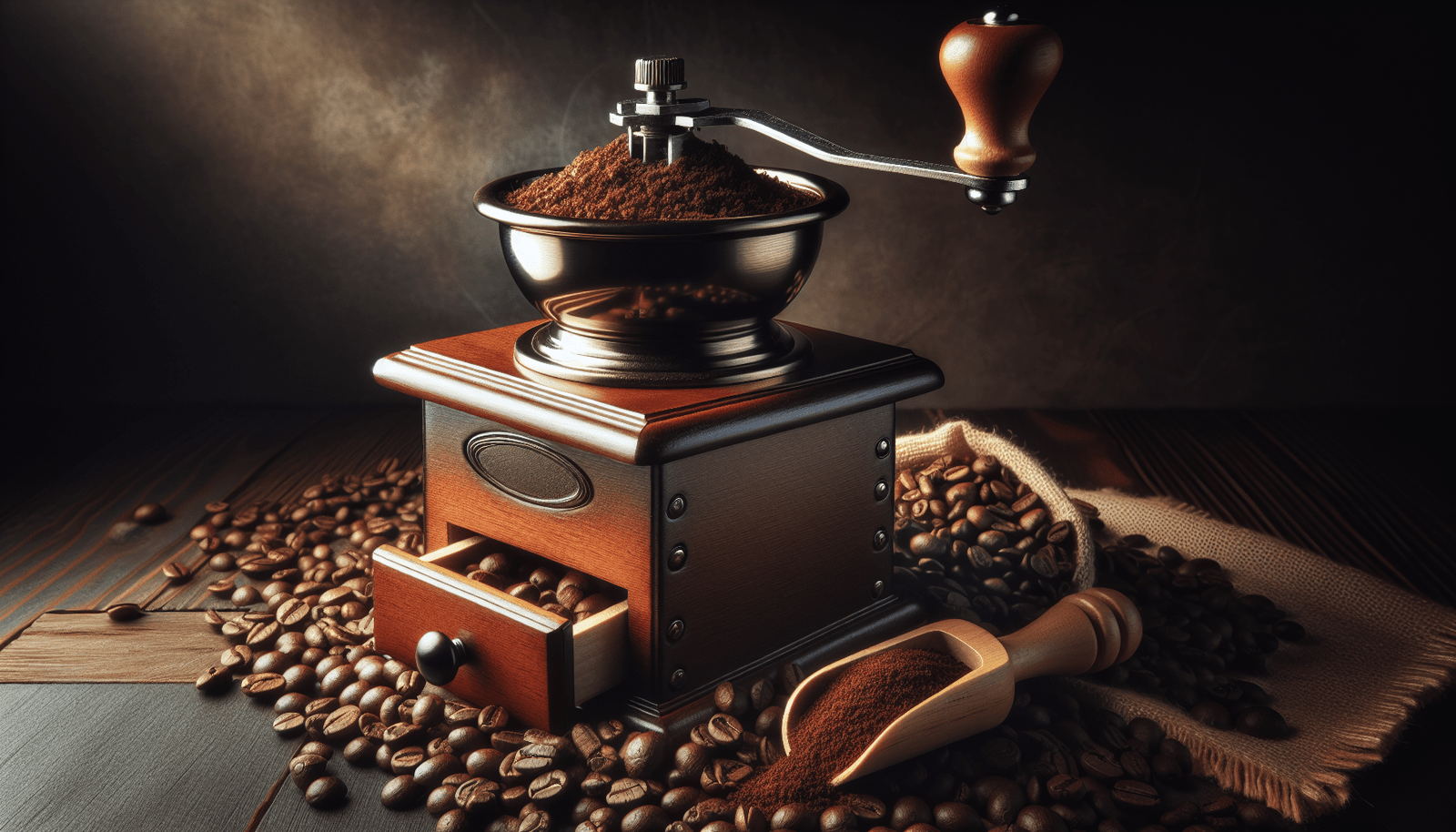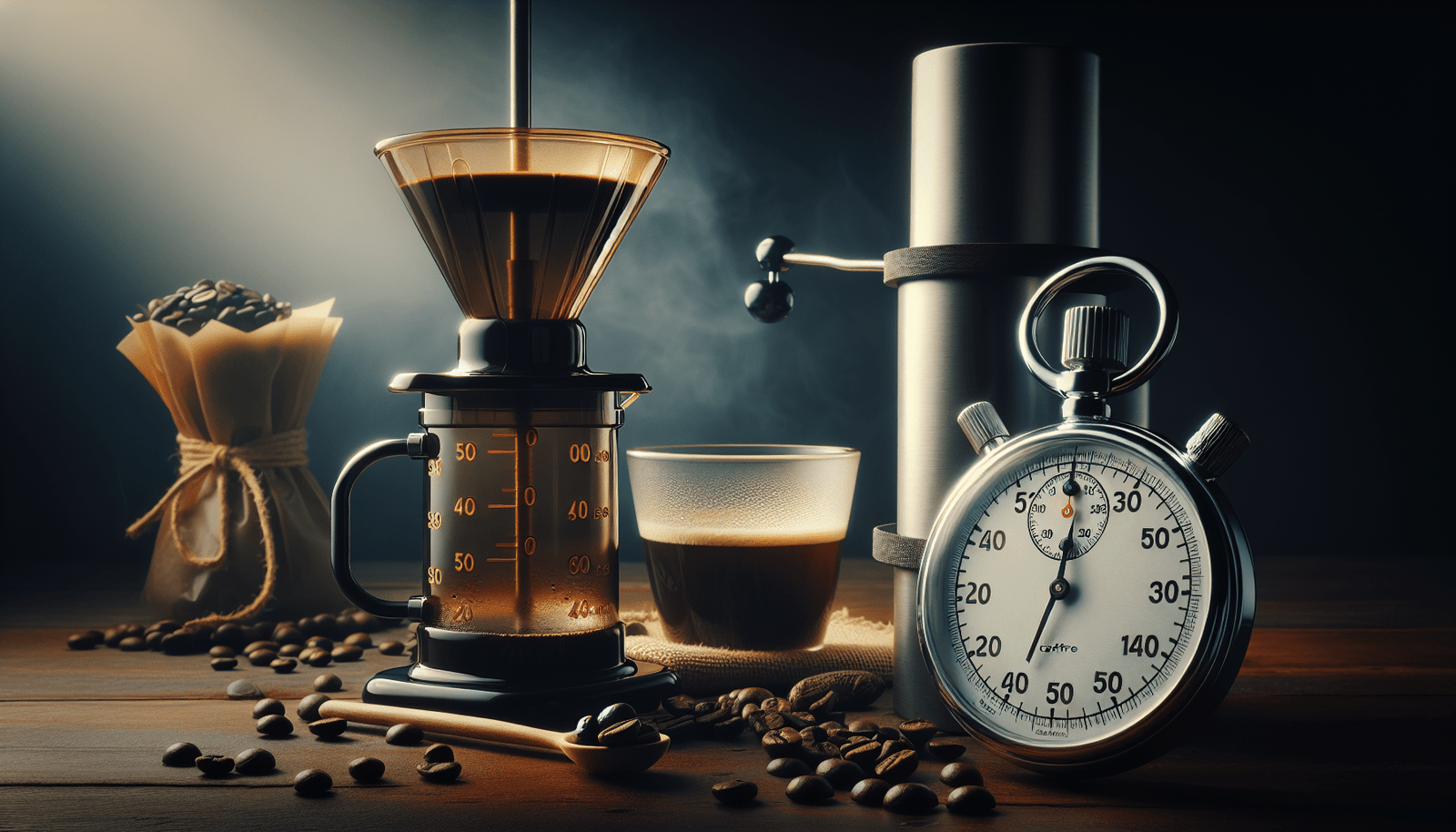Are you tired of mediocre coffee and seeking the perfect cup of joe? Look no further than a high-quality coffee grinder. But with so many options out there, how do you choose the right one? In this article, we’ll guide you through the essential factors to consider when selecting a coffee grinder that suits your needs, ensuring that every sip of your freshly brewed coffee is rich, flavorful, and satisfying. Get ready to elevate your coffee game to new heights!
1. Types of Coffee Grinders
Blade Grinders
Blade grinders are a popular and affordable option for grinding coffee beans. These grinders use a spinning blade to chop the beans into small pieces. While they are generally inexpensive, they may not provide the most consistent grind size. The blades can also generate heat, which can affect the flavor of the coffee. If you are on a tight budget and don’t mind a slightly less uniform grind, a blade grinder could be a suitable choice.
Burr Grinders
Burr grinders are known for their superior grind consistency. They use two metal or ceramic burrs to crush the coffee beans into uniform particles. This results in a more even extraction and better-tasting coffee. Burr grinders offer various grind settings, allowing you to adjust the size based on your brewing method. While they tend to be more expensive than blade grinders, the investment is worth it for coffee enthusiasts who value the quality and flavor of their brew.
2. Budget Considerations
Determining your budget
Before choosing a coffee grinder, it is essential to determine your budget. Coffee grinders come in a wide range of prices, from affordable options to high-end models. Consider how often you will use the grinder and the importance of grind consistency in your brewing routine. Setting a budget will help narrow down your options and ensure you get the best value for your money.
Value for Money
While it can be tempting to opt for the cheapest grinder available, it’s crucial to consider the value for money. Cheaper grinders may not offer the same level of grind consistency or durability as more expensive models. It’s worth spending a bit more to invest in a grinder that will provide a consistent grind size and last for a longer time. Look for grinders that offer a good balance between affordability and quality.
3. Grinding Consistency
Uniformity of grind size
The consistency of the grind size plays a vital role in the flavor extraction of your coffee. Blade grinders tend to produce a less consistent grind due to the spinning blade chopping the beans. This can result in uneven extraction and a coffee brew that lacks balance in flavor. Burr grinders, on the other hand, offer a much more consistent grind size, ensuring that each coffee particle is of the same size. This consistency leads to a better extraction and a more flavorful cup of coffee.
Adjustability of grind size
Different brewing methods require different grind sizes. Whether you prefer a coarse grind for a French press or a fine grind for an espresso machine, having the ability to adjust the grind size is essential. Burr grinders typically come with a wide range of grind settings, allowing you to customize the size to suit your brewing method. This versatility ensures that you can achieve the optimal extraction for your chosen coffee style.
4. Capacity
Personal use vs. commercial use
Consider whether you will be using the grinder for personal or commercial use. For personal use, a grinder with a smaller capacity may be sufficient. However, for commercial settings such as cafes or offices, a grinder with a larger capacity will be required to meet the higher demand. Keep in mind that a larger capacity grinder may take up more counter space, so it’s crucial to strike a balance between capacity and available space.
Amount of coffee beans to grind at once
Think about how much coffee you typically brew at once. If you usually only make a single cup of coffee, a smaller capacity grinder may be more suitable. However, if you often brew multiple cups or entertain guests, a grinder with a larger capacity will allow you to grind a larger quantity of coffee beans at once, saving you time and effort.
5. Speed
Impact of grinding speed on flavors
The speed at which the coffee beans are ground can affect the flavor of the coffee. Blade grinders typically operate at high speeds, which can generate heat and potentially alter the flavor profile of the coffee. Burr grinders, on the other hand, offer a slower and more controlled grinding process, minimizing heat and preserving the coffee’s delicate flavors. If flavor is a top priority for you, opting for a lower-speed burr grinder is recommended.
Control and customization of grind time
Having control over the grind time can greatly influence the final result of your coffee. Different brewing methods require different grind times to achieve the desired extraction. Burr grinders often offer adjustable grind time settings, allowing you to customize the duration based on your brewing preferences. This level of control ensures that you can achieve the perfect grind for your chosen brewing method, resulting in a more delicious and well-balanced cup of coffee.
6. Material and Durability
Stainless steel vs. ceramic burrs
The material of the burrs in a coffee grinder can impact its durability and performance. Stainless steel burrs are known for their longevity and ability to withstand heavy use. They are also more resistant to chipping or breaking. Ceramic burrs, on the other hand, are typically quieter during operation and have the advantage of not generating heat during grinding. While both materials offer excellent grind consistency, the choice between stainless steel and ceramic comes down to personal preference and specific needs.
Quality of construction materials
Consider the overall quality of the construction materials used in the grinder. Look for grinders made from durable materials that can withstand regular use. Pay attention to the build quality, ensuring that components are well-constructed and designed to last. Investing in a grinder made from high-quality materials will ensure its longevity and provide you with a reliable coffee grinding experience.
7. Size and Portability
Kitchen space availability
The size of the coffee grinder is an important factor to consider, particularly if you have limited kitchen space. Measure the available space in your kitchen to determine how much room you can allocate for the grinder. Blade grinders are generally more compact and take up less counter space. Burr grinders, especially those with larger capacities, can be bulkier and require more room. Consider the size of the grinder and how it will fit into your kitchen setup.
Ease of storage and transportation
If you require a portable coffee grinder, consider its ease of storage and transportation. Some grinders are designed with a smaller footprint, making them more convenient for travel or camping. Ensure that the grinder is easy to disassemble, clean, and reassemble for hassle-free transportation. Look for features such as a removable handle or compact design that allows you to store the grinder without taking up too much space.
8. Noise Level
Considerations for noise-sensitive environments
If you live in a noise-sensitive environment or have family members or roommates who are sensitive to noise, the loudness of the coffee grinder may be a concern. Blade grinders tend to produce more noise due to the high-speed spinning blades. Burr grinders, particularly those with lower-speed motors, offer quieter operation, making them more suitable for noise-sensitive environments. Look for grinders that prioritize noise reduction for a more peaceful coffee grinding experience.
Quiet operation options
Some coffee grinders are specifically designed for quiet operation. These grinders often feature sound insulation or dampening materials, reducing the noise produced during the grinding process. If noise is a significant factor for you, consider investing in a grinder that offers quiet operation options. While these grinders may be slightly more expensive, they provide a more pleasant experience without disturbing the peaceful ambiance of your home.
9. Ease of Use
User-friendly controls and interfaces
Choose a coffee grinder with user-friendly controls and interfaces to simplify the grinding process. Look for grinders with clearly labeled buttons or dials that allow you to select the grind size and duration with ease. Intuitive controls ensure that even beginners can achieve the perfect grind consistently. Additionally, consider grinders that offer programmable settings, allowing you to save your preferred grind preferences for future use.
Easy cleaning and maintenance
Regular cleaning and maintenance are essential to keep your coffee grinder in optimal condition. Look for grinders that are easy to disassemble, clean, and reassemble. Removable burrs or grinding chambers make it more convenient to remove coffee residue and oils. Some grinders even have dishwasher-safe parts, simplifying the cleaning process further. Consider the cleaning and maintenance requirements of a coffee grinder before making your decision.
10. Brand and Customer Reviews
Reputation and reliability of brands
Consider the reputation and reliability of different coffee grinder brands when making your choice. Research the brands you are considering and look for companies known for producing high-quality, durable, and reliable grinders. Read customer reviews and ratings to gain insight into the experiences of other coffee enthusiasts. A reputable brand with positive customer feedback is more likely to provide a satisfactory coffee grinding experience.
Feedback from other coffee enthusiasts
Listening to the opinions and experiences of other coffee enthusiasts can be valuable in choosing a coffee grinder. Visit online coffee communities, forums, or review websites to gather feedback from fellow coffee lovers. Pay attention to their feedback on grind consistency, durability, ease of use, and overall satisfaction with the grinder. By considering the experiences of others, you can make a more informed decision and select a coffee grinder that meets your specific needs and expectations.
In conclusion, choosing a good coffee grinder is essential for achieving the best-tasting coffee. Consider factors such as the type of grinder, budget, grind consistency, capacity, speed, material and durability, size and portability, noise level, ease of use, and brand reputation. By carefully evaluating each aspect, you can select a coffee grinder that suits your brewing preferences and delivers a flavorful and enjoyable cup of coffee every time. Happy grinding!




